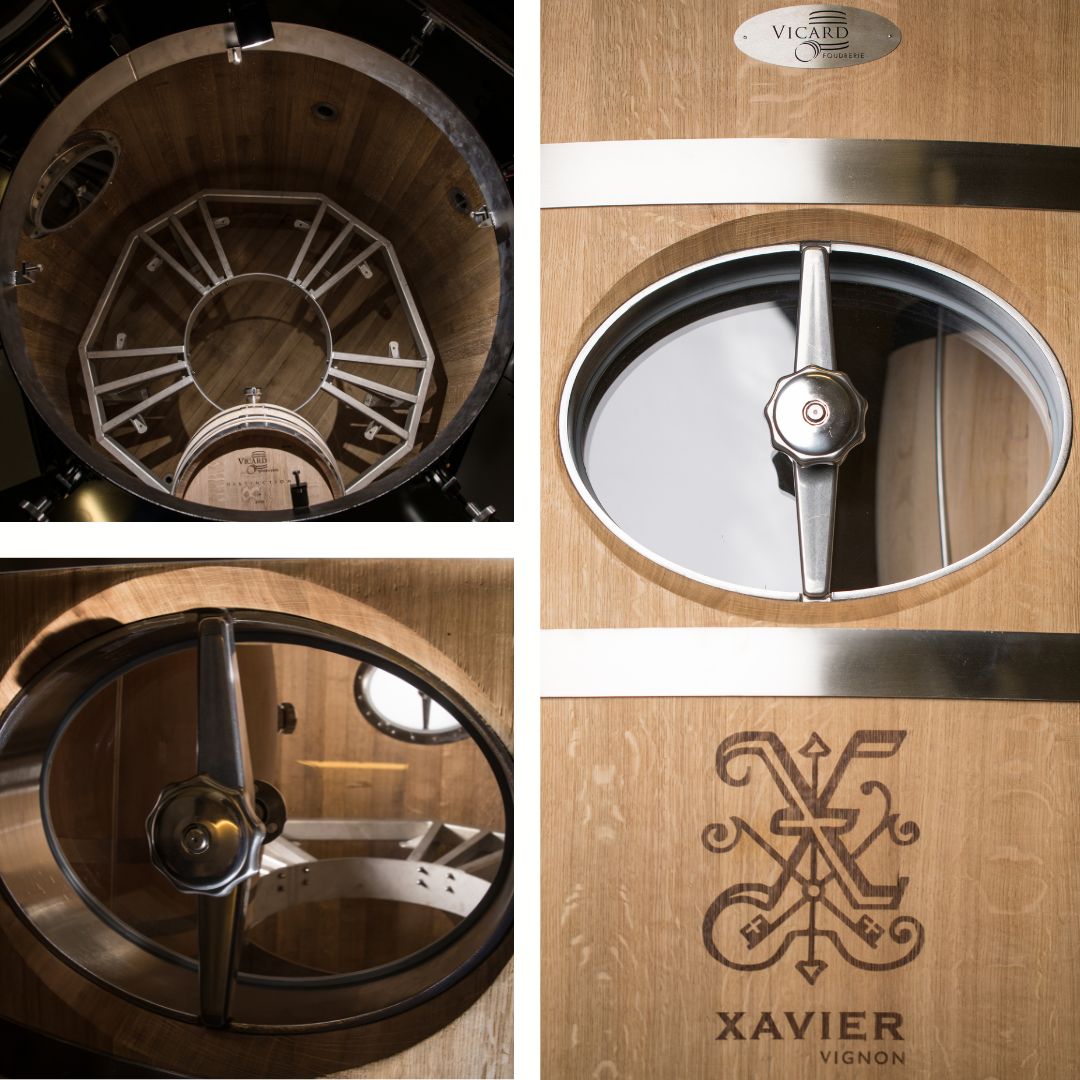Once the grapes are transformed into wine, the crucial stage of aging begins. This phase allows the wine to mature, enhancing its flavors and complexities for eventual consumption and appreciation. The duration of aging varies widely – from just a few weeks for youthful wines to more than two years for those meant to be aged longer. This process can occur in diverse containers such as stainless steel, concrete, earthenware, and, prominently, wood.
Barrels and other containers
Aging wine in barrels, typically holding 225 or 228 liters and made usually of oak but sometimes acacia, does more than just infuse the wine with woody aromas. It facilitates a constant interaction between the tannins of the wine and those of the wood. Wood is more than just a flavor enhancer; it's a porous environment that encourages the intermingling and exchange of tannins. The aging duration, the oak's quality (including its origin and drying time), and the age of the barrels play a significant role in determining the quality of the aging process. Contrary to popular belief, longer barrel aging doesn't necessarily mean the wine will have a more pronounced woody flavor. The influence of the barrel on the wine is not directly proportional to the time spent in it.
Wood's role in winemaking goes beyond flavor; it expands the wine's character, enhancing its aromas and creating a lasting finish that resonates more profoundly on the palate. Besides the traditional barrel, various larger containers, like 350-liter and 400-liter casks, demi-muids of 500 or 600 liters, and even larger foudres, are used. Each winemaker chooses their container based on what they feel works best for their wine, as there's no standard rule for this choice.
"Vin dans le Vin" Concept
We also blend different materials using containers made of oak, stainless steel, glass, or concrete. Our approach to wood, especially in light of climate change, has evolved significantly since 2012. We aim to age wine in the most favorable conditions possible, shielded from oxygen. The solution? The unique "vin dans le vin" or "wine within wine" aging method. It involves submerging custom-made 160-liter barrels, crafted with thick staves, into a wooden truncated cone vat. This extraordinary method is not only visually stunning but also revolutionary. The wine remains in an impeccably balanced environment with no external exchange, free from temperature, pressure, oxygen, or even electrical tension fluctuations. The absence of oxygen also means the wine needs far fewer sulfites. As a result, the aging process is extended, and the wines stay fresher for longer.
Regarding oak barrels themselves, these containers are still handcrafted by artisans who pass down their skills through generations. One critical step in barrel-making is called "toasting": this can be light, medium, or heavy and vary in duration. The barrels are placed over a small fire for about 45 minutes and rotated periodically to 'cook' the interior evenly, soften the oak fibers, and shape the barrel. Then, a second, shorter toasting of around 20 minutes is done to tighten the base of the still unhooped barrel gradually. This delicate process not only shapes the barrel but also imparts a toasted flavor to the wood, ranging from subtle to strong. This flavor significantly influences the aging process of the wine and its resulting woody character.
